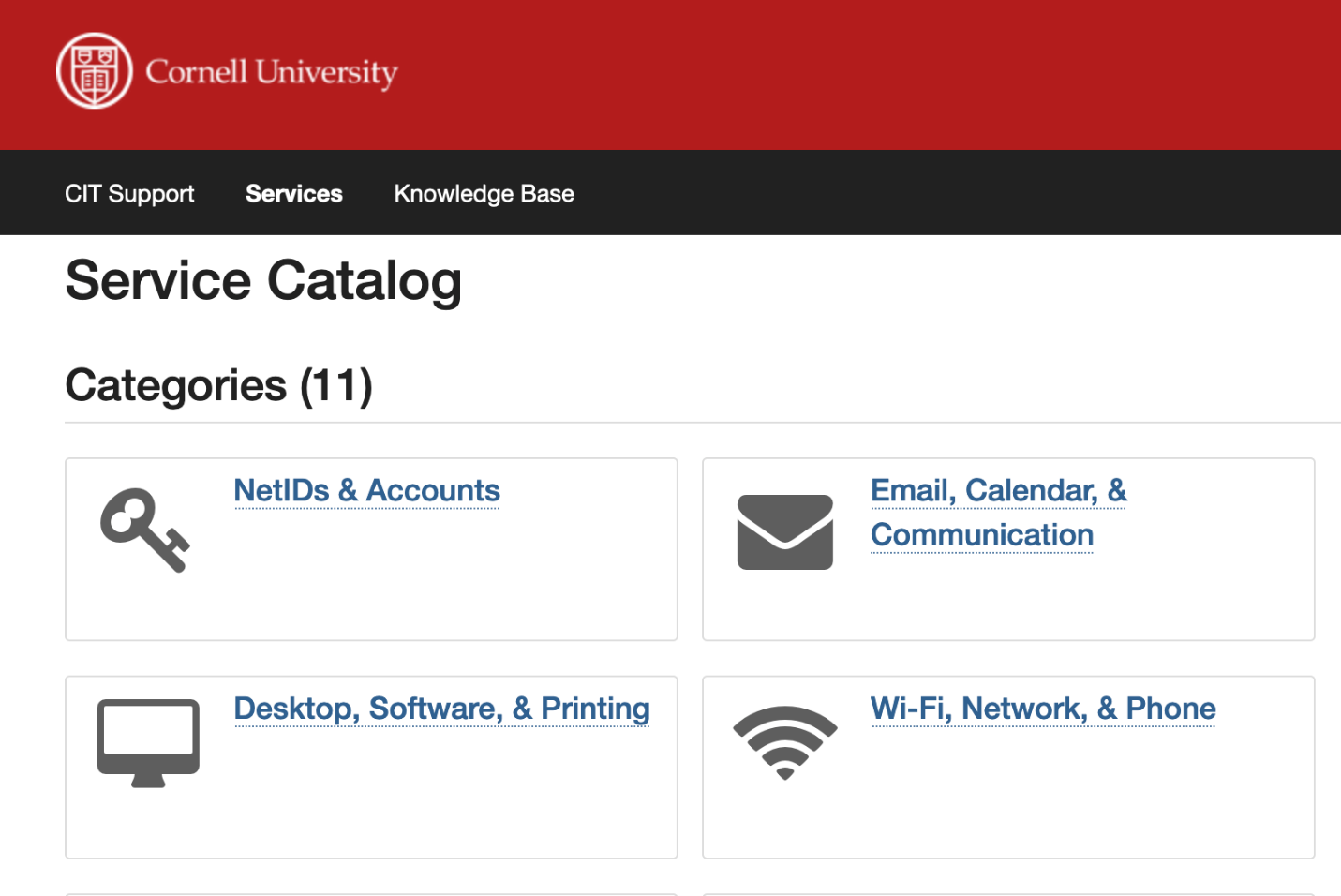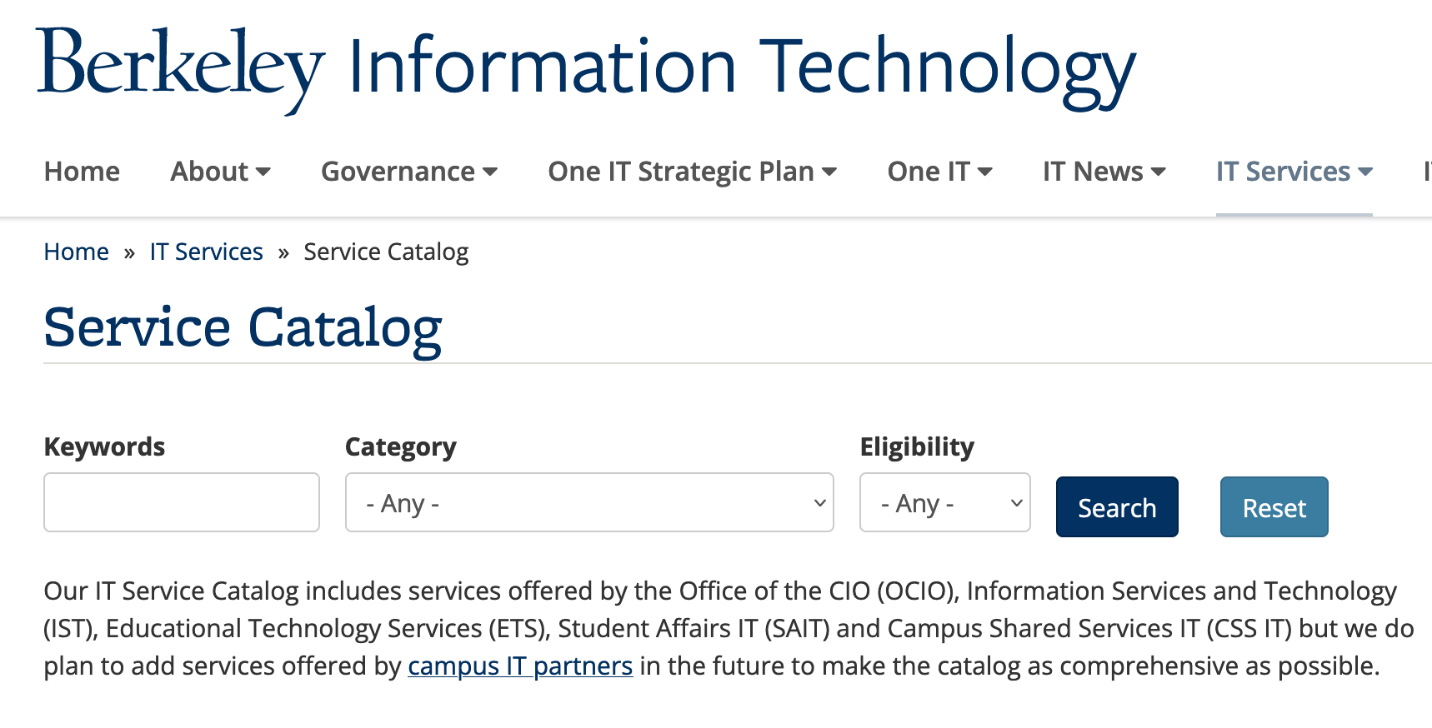Imagine you went to a restaurant hungry for dinner—but there was no menu. Instead, you had to guess what types of dishes the place offered, what came with each, which items were appetizers or entrees, and how much they cost. It would not make for an enjoyable dining experience.
While running an MSP is very different from managing a restaurant, having an organized “menu” of offerings available to clients provides clarity and transparency into your services and their costs. It can help communicate exactly what you do to potential clients, and in turn help clients make decisions about the services they need (and can afford).
A service catalog for IT can also support better communication with clients and set expectations on both sides. This can foster a more effective customer journey for potential clients who are considering your services and promote successful business relationships with existing clients.
What goes into an IT service catalog?
An IT service catalog is a centralized resource and single source of truth for accurate and easily accessible information on your IT service offerings. It is also a place where your clients can request those services and products based on the details provided.
Service catalogs are an important aspect of the Information Technology Infrastructure Library (ITIL). This is a widely used framework of suggested best practices for delivering IT services in a way that aligns with business needs.
While there are many aspects to an ITIL service catalog, the main purpose is to improve communication and transparency; it should be structured and organized in a way that makes sense to you and your clients. It should also be user-friendly and intuitive to access, browse, and search.
For your business, a catalog standardizes your service offerings—their scope, features and specifications, costs, and time requirements--for internal clarity, coordination, and scheduling. It also ensures you deliver them consistently across the range of your clientele without errors or omissions. By improving external communication and internal workflows and organization, an IT service catalog contributes to greater productivity, efficiency, and client satisfaction.
Categories and descriptions within your catalog should be designed to help clients make decisions about which services fit their needs. Areas they should cover include:
- Service descriptions. These should be written in clear and simple language that describes the service, its purpose, and its benefits.
- Costs. If possible, include pricing details or a range. This can help your clients understand the financial impact and help them budget for them.
- Dependencies. Some services will require other services or components to be completed, installed, or repaired before they can be started.
- Security details and user access. List any security concerns, restrictions, or user permissions that may need consideration.
- Service levels. Provide details on service level agreements (SLAs), including typical time requirements for response, resolution, and delivery. You should also include your hours of availability, including for emergencies.
- Request process. The catalog should include clear instructions on how to request each service. This could be via email, an online portal, or some other method. If specific details are required for any services, list them as well.
- Contact information. List emails or phone numbers for yourself and team members handling each service, as well as for general inquiries.
How IT service catalogs support MSPs
An IT service catalog can help you meet client needs faster and more efficiently, promoting your reputation as a trusted and highly competent provider. It’s also an important tool for managing and presenting your offerings to both current and potential clients in a professional manner.
Beyond individual service descriptions, a catalog can provide valuable context about their value and impact on clients’ business operations. It also helps clients understand the full scope of services you provide, ranging from backup and recovery and cybersecurity to network monitoring and management.
A well-planned service catalog for IT can bring benefits to your business as well:
- Marketing. A comprehensive list or database of services can also serve a sales and marketing tool. Highlighting the range of your offerings (as well as how they can work together to support greater productivity or security) can build opportunities for selling additional services to existing and new clients.
- Streamlined processes and communication. By standardizing workflows, you can respond to inquiries and requests faster. Information on services is easily accessible, reducing or eliminating the need for multiple emails or calls with clients to explain or coordinate them.
- Resource management. A structured IT service catalog gives you more transparency into which services are most popular, enabling you to shift more resources toward marketing and fulfilling them.
Clients come to you for the tools to help solve their operational pain points and enhance business productivity. A well-designed service catalog also accomplishes this goal by making the process of learning about and requesting your services easier and faster. For more guidance and ideas on how to secure more clients and drive business success, check out our webinar: Maximizing Sales Potential: Strategies and Solutions for Accelerating.
IT service catalog examples
Organizations approach service catalogs for IT in different ways. These are a few examples that may inspire you as you plan and build your own service catalog.
The Illinois Department of Innovation and Technology separates services for the state’s agencies into easily understandable categories, such as “Collaboration Tools” and “Security.”

Cornell University’s service catalog also divides services into categories and provides a helpful icon for each.

The University of California at Berkeley’s IT department places a search bar front and center on their service catalog home page.

Building out your MSP service catalog
Carefully planning your service catalog for IT will help ensure the end resource is useful and valuable for both your clients and your business. Following these steps can help guide you through the process.
- Inventory your current services. Identify all of your offerings and details about each, including features, service level agreements, costs, service owners responsible for responding to requests, etc.
- Write service descriptions. These should include each service’s definitions, purpose, and benefits, as well as any dependencies or security requirements.
- Price your IT services: If applicable, include the cost or pricing structure, including any special fees or charges.
- Categorize services logically. Grouping similar services helps clients navigate to the ones they need quickly. For instance, some groupings could be “security solutions,” “communications,” and “hardware.”
- Establish Service Level Agreements (SLAs). These should outline expected times for response and resolution of service requests.
- Create a process for requests. Decide whether clients will use an online portal, email, or some other method to request services, and how they will be directed to the correct team member.
- Decide on a format. Decide how services will be organized, such as through a searchable platform or in a detailed outline. Consider simple visuals such as icons or diagrams to enhance user-friendliness.
- Review and test. Invite key team members to look over and try out the catalog to make sure information is accurate and easy to understand, and that it functions as intended.
- Publish and share. Publish the service catalog on your site or where clients can access it and ensure they are aware it exists and how to use it.
- Update and improve. Make sure the catalog reflects any changes or additions to your services. Incorporate feedback and suggestions from clients and other users to make it more useful and accessible.
Best practices for IT service catalogs
Some best practices can help ensure your service catalog meets the needs of your clients and helps you run your business more efficiently. An ITIL-aligned service catalog incorporates standards from the framework to support its readability and usability for a wide audience.
Some general good practices include:
- Put users’ needs front and center. Many of the people needing your services won’t have a technical background, so language should be as clear and concise as possible. Avoid complex technology terms and business jargon. Make sure the interfaces for searching the catalog and making a service request are simple, intuitive, and easy to use.
- Get input from key stakeholders and users. Ask for feedback and guidance about what should be included in the service catalog, how it should be organized, and how to request services.
- Provide training and guides. Offering training sessions can help introduce clients to the IT service catalog as a portal and ensure they know how to use it effectively. Guides can serve as a self-service option and can also include information on common requests (such as resetting a password or requesting a new computer).
- Provide a knowledge base. Articles and guides related to each service can help clients troubleshoot some issues on their own or help them understand service parameters and purposes.
IT service catalog solutions
Designing, building, and maintaining an ITIL service catalog can be a big project. Fortunately, technology solutions can help ease the burden on you and your team. These are some applications and solutions that can help streamline the process.
- IT service management software: These tools have built-in features to create and manage catalogs, including templates and workflows. They can also provide reports and manage requests.
- Self-service portals. Tools like the ConnectWise PSA End User Portal can be integrated into your catalog for users to request services, eliminating the need to build one manually and enabling faster customer service.
- Design tools. These can help you create useful and visually appealing layouts with options like drag-and-drop features to arrange images and text on the page.
- Integration tools. These can synchronize information with other systems to ensure all data is consistent and accurate. For instance, if a client requests a piece of equipment, inventory asset management will show whether it is available.
- Version control systems. IT service catalogs should be frequently updated. Version control can help keep track of changes, such as when they were made and who made them.
- User feedback applications. Surveys and other tools can be a valuable way to gather suggestions from users on how to improve the site or details about problems using it.
Your catalog for IT services is a critical component of a successful business management strategy. From proactively addressing customer pain points to streamlining communication, a strong IT service catalog can help you deliver high-quality services to your clients.
ConnectWise offers a suite of business management solutions designed to help MSPs profitably grow their business through automation and improved operational efficiency, enabling you to take on more clients. Start your free on-demo today to see the benefits of our business management suite firsthand.

















